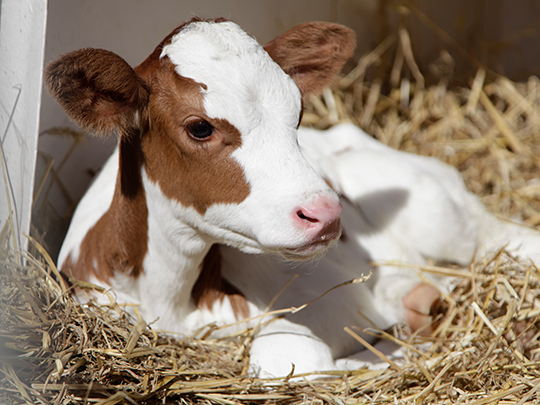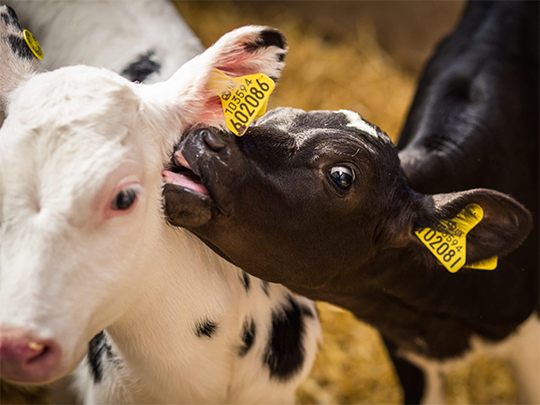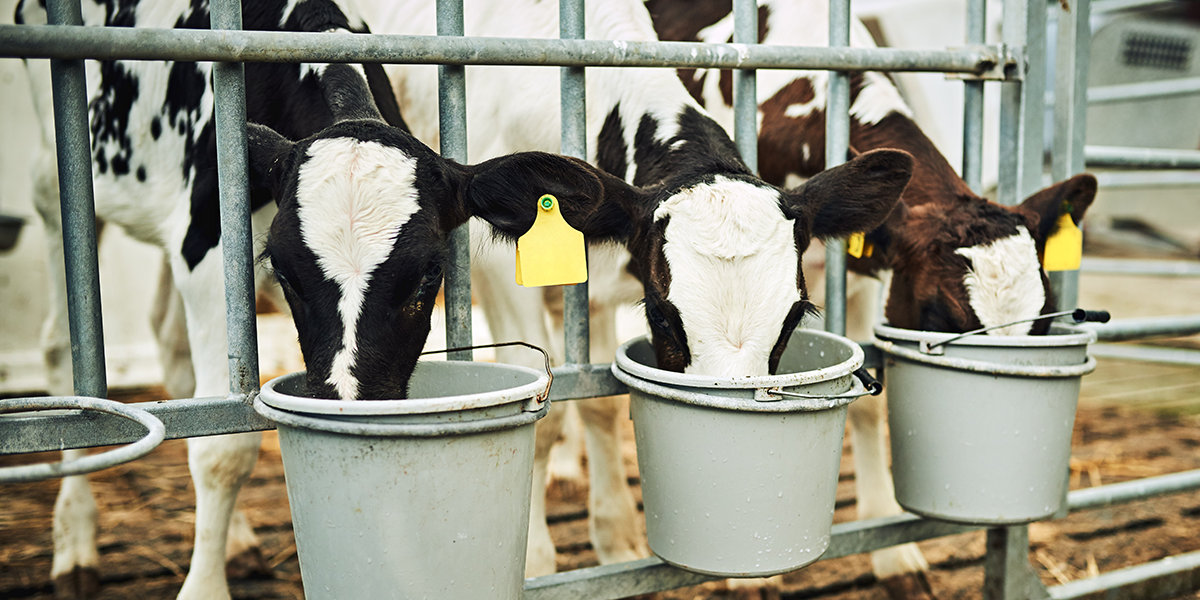Improving profitability and resilience of calves (part 1)
Calves have to undertake a difficult path once they are born: During their growth, they have to overcome challenges in terms of feeding transition, housing and of course pathogenic pressure. Next to a good calf management program, phytogenic feed additives can additionally support animals during challenging times. In this article, we will focus on the main diseases and related pathogens that can affect calves in the early life stages and provide some tips in order to reduce their incidence in the heard. Learn more about the options for improving profitability and resilience in calves.

Why are calves so susceptible to diseases?
Calves are quite prone to diseases as they are young animals with a non-mature immune system, undergoing different challenges such as separation from the dam, changes in housing and grouping, weaning and feed transition, physiological evolution etc.. All these challenges are sources of stress, which, in addition to pathogens from the environment and possible management mistakes can lead to sickness.
Out of the different conditions that can afflict calves, two are quite recurrent in farms and can affect a wide range of animals: gut related diseases (e.g. diarrhea) and bovine respiratory disease (BRD). They have various possible causing pathogenic agents and happen at different stages in the calf’s life. Usually, diarrhea occurs earlier and is the main cause of death, whereas BRD is observed later on and constitute the 2nd biggest threat to calves’ life (Table 1).
| Percent preweaned Heifers | ||||||
| Affected | Affected | Treated | Treated | Percentage of affected preweaned heifers treated | Percentage of affected preweaned heifers treated | |
| Disease or disorder | Pct. | Std. error | Pct. | Std. error | Pct. | Std. error |
| Diarrhea, bloat (digestive problem) | 25.3 | (8.3) | 18.2 | (5.9) | 71.8 | (11.1) |
| Pneumonia (respiratory) | 18.1 | (5.9) | 16.4 | (5.7) | 90.2 | (6.5) |
| Navel infection | 1.5 | (0.5) | 1.3 | (0.5) | 87.4 | (8.0) |
| Lameness/injury | 0.7 | (0.3) | 0.5 | (0.2) | 74.0 | (12.7) |

Diseases have a great impact on the calf growth and future performance
Aside from their obvious and direct cost, like treatments and extra work, diseases have a great impact on the calf growth and future performance. Indeed, because of the energy spent in fighting the disease and recovery, the growth performance of the animal is reduced. A direct correlation between the average daily gain (ADG) before weaning and the later milk production of the primiparous cow has been demonstrated by Soberon and Van Amburgh (2013): for every extra 1 kg of preweaning ADG, first lactation milk yield is increased by 1,550 kg. Reducing the incidence of sickness would then have a positive effect on the future cows’ performance.
Did you know?
It has also been demonstrated that calves having suffered from diseases are more susceptible than “healthy” ones to other outbreaks. Calves affected by diseases are not necessarily bound to die, but they can become reservoir for the pathogens to spread to other animals. This is why it is important not only to consider the mortality rate of a given disease, but also its morbidity rate, which can influence the rearing cost of the animals.

How can phytogenics help in improving the calves' resilience?

Delphine Lacombe
Delphine Lacombe has joined Delacon in April 2018, as Customer Technical Manager for the ruminant team. She is an agronomist engineer, graduated from Agrocampus Ouest in France, and started working as dairy nutritionist for a feedmill. For the past 10 years, Delphine has been working within animal nutrition industry, mainly in the feed additive business. At the moment, she is responsible for the technical support of the EE and Latam regions.










